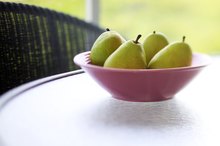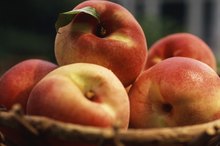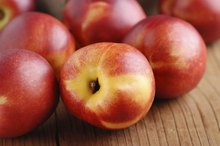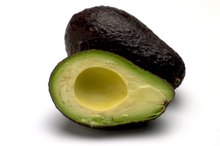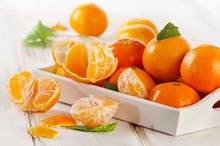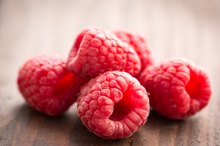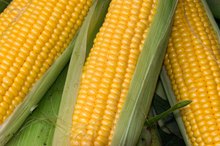The Glycemic Index for Fruits
Low in fat but rich in nutrients like potassium, fiber and vitamin C, fruits are a mainstay of a healthy diet. The U.S. Department of Agriculture recommends adults consume between 1 1/2 and 2 cups of fruits per day, be it fresh, canned, frozen or dried. Many fruits also are low glycemic index, a property that might add to their already numerous health benefits.
Significance
Almost all fruits, with the exception of avocado and olives, are carbohydrate foods. The glycemic index, or GI, is a ranking of 0 to100 used to describe the rate at which different carbohydrate-containing foods, such as fruit, raise blood glucose after they're eaten 1. Low GI foods cause a slow and gradual rise in blood glucose; high GI foods break down quickly, causing a sudden spike in blood glucose. A diet based on low GI foods can be beneficial to health, particularly for those struggling with weight control or diabetes management.
- Almost all fruits, with the exception of avocado and olives, are carbohydrate foods.
- A diet based on low GI foods can be beneficial to health, particularly for those struggling with weight control or diabetes management.
Considerations
Does Fruit Make Your Blood Sugar Go Up?
Learn More
While the GI seems like a relatively straightforward ranking system, a variety of factors influence glycemic index 1. In the case of fruit, ripeness can play a major role. Riper fruit tends to contain more sugar than less ripe fruit. This increases its glycemic impact, says the Harvard School of Public Health. For example, a slightly under-ripe banana has a low GI compared with the moderate GI of a very ripe one. Another consideration is food quantity. Although watermelon has a high GI ranking, it actually has limited glycemic impact because the fruit contains only a small amount of carbohydrates per serving.
- While the GI seems like a relatively straightforward ranking system, a variety of factors influence glycemic index 1.
- Although watermelon has a high GI ranking, it actually has limited glycemic impact because the fruit contains only a small amount of carbohydrates per serving.
Low GI
Low glycemic index fruits have a ranking of 0 to 55. Most fruits grown in temperate climates are low GI. These include:
- apples
- all types of berries
- cherries
- kiwifruit
- grapes
- pears
- peaches
- plums
Citrus fruits such as lemons, limes and oranges also are low GI fruits. Dried apricots, apples and prunes are low GI fruits. Canned fruits packed in juice and 100 percent fruit juices, such as apple, grapefruit and orange, are low GI as well.
- Low glycemic index fruits have a ranking of 0 to 55.
- Dried apricots, apples and prunes are low GI fruits.
Moderate GI
Nutritional Content of Melons
Learn More
Medium GI fruits have a moderate glycemic impact, ranking between 56 and 69. Tropical fruits like pineapple, mango and papaya are medium GI. Fresh apricots and cantaloupe are medium GI, as are dried raisins and figs. Also among the list of medium GI fruits are those canned in syrup, such as fruit cocktail, peaches or apricots.
- Medium GI fruits have a moderate glycemic impact, ranking between 56 and 69.
- Also among the list of medium GI fruits are those canned in syrup, such as fruit cocktail, peaches or apricots.
High GI
Very few fruits have a high glycemic index, defined as greater than 70. Watermelon and dates are high GI fruit, but it should be noted that GI scores vary from low to high depending on the date variety. This again highlights the potential shortcomings of using GI as a major factor in fruit selection.
Related Articles
References
- University of Sydney: Home of the Glycemic Index
- American Diabetes Association. Diabetes Superfoods.
- Glycemic Index. Glycemic Search Index.
Writer Bio
Kristen White started writing professionally in 2004. She has written for the websites New Farm and Aspire for Life, and for New Zealand's Healthy Food Guide. She is a registered dietitian with clinical experience in weight management and diabetes. White holds a Bachelor of Science in nutrition from Penn State University, and a Master of Science in agronomy from the University of Minnesota.
